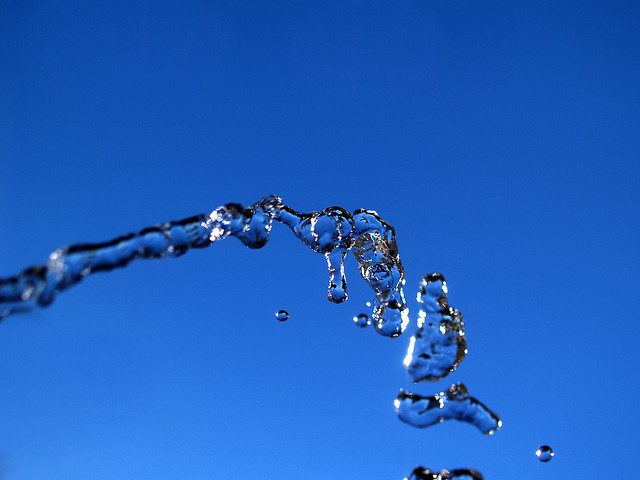
In a world of finite resources, fresh water stands next in line to cause shortage, misery, and conflict. Only about 2.5 percent of the world’s water is fresh, and most of that is locked up in ice sheets and glaciers—much of which is melting into the salty ocean thanks to climate change. That tiny sliver that’s left has to support billions of people. And a small portion of that sliver—surface water in rivers, lakes and streams—supports at least half of the world’s population.
Keeping that water clean is paramount for public health. Ever since John Snow discovered the source of the Broad Street cholera outbreak in 1854, we’ve been hard at work keeping our water clean. But all that treatment costs money, and often the best way to ensure safe drinking water is to not sully it in the first place.
One of the best and most cost effective ways to ensure clean drinking water is to leave native vegetation within the watershed in tact. Each additional 10 percent of a watershed that remains forested reduces water treatment costs by 20 percent. In the United States, where two-thirds of the population gets its drinking water from surface sources, that ratio can save cities a lot of money. Seattle, Portland, and Boston have taken this to heart, conserving land specifically because it is cheaper than building new treatment plants or expanding old ones.
Fortunately for many U.S. cities, the typical American drinking water watershed is still nearly 80 percent vegetated. There is bad news, though: Not all watersheds are so fortunate—some have as little as 17 percent native vegetation—and half have only 3 percent of their area set aside for conservation. Threats to native vegetation are greatest in the populous Ohio River Valley and Southeastern states, and the amount of conserved land in much of that area is startlingly low, too. The median Ohio River Valley watershed has only 1.8 percent of its land set aside, while the median Southeast watershed has a mere 0.2 percent.
Plants do more than just keep water clean—they also make it more usable. Vegetation has a calming effect on water, slowing its progress down hillsides, allowing it to seep into the ground and emerge slowly and steadily into lakes and streams. Without plants to intervene, water surges into streams and rivers, quickly filling reservoirs to capacity and leaving dam operators with little choice but to open the sluice gates, wasting the water. (These impromptu floods can be beneficial to downstream riparian vegetation in some cases, but too much force can be torrentially detrimental.) Since people’s water use tends to be steady day-to-day, dams which capture water more slowly can make more efficient use of it.
The importance of vegetation in securing a clean and reliable supply of drinking water cannot be overstated. Safe drinking water is extremely difficult to come by in much of the world. Places like Ethiopia and Haiti have chronic shortages of safe drinking water. Not coincidentally, many of those same countries have lost nearly all of their forests. While the loss of native vegetation is not the only cause of these countries’ water woes, it plays an important role. Fresh water is an already scarce commodity. It’s important to keep it as potable as possible.
Sources:
Ernst, Caryn, Richard Gullick, and Kirk Nixon. 2004. Protecting the source: conserving forests to protect water. Opflow 30:1–7. (available online)
Wickham, J., Wade, T., & Riitters, K. (2011). An environmental assessment of United States drinking water watersheds Landscape Ecology DOI: 10.1007/s10980-011-9591-5
Photo by Cyron.
Related posts: